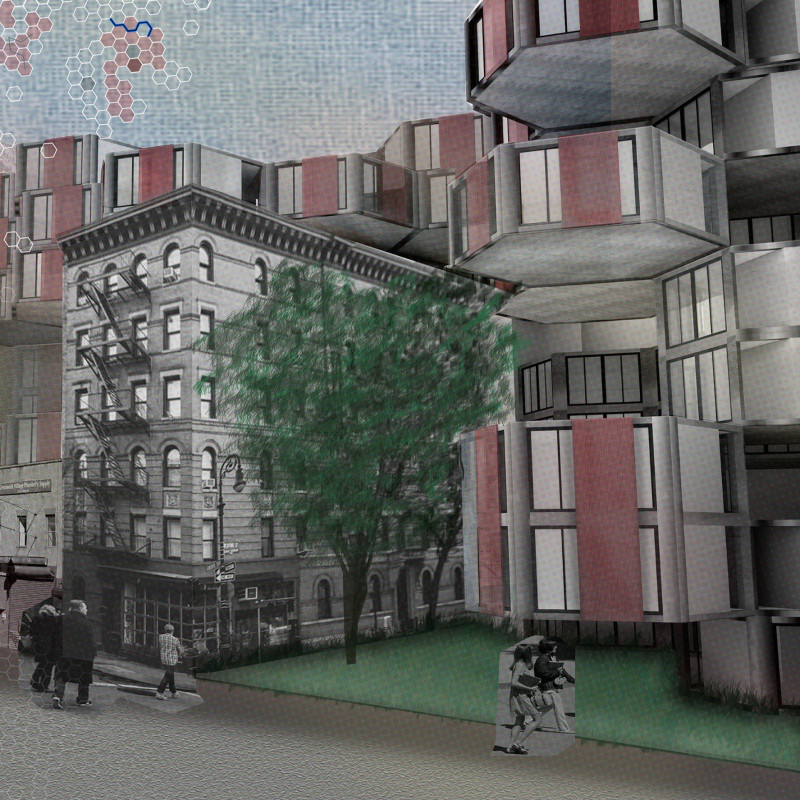5 key facts about this project
The Hive is a thoughtful response to the urban environment of New York City, highlighting the city’s diverse cultural landscape. Designed with an emphasis on adaptability, the project focuses on creating living spaces that serve not just individual needs but also promote connections among residents. Each component functions as part of a larger whole, fostering a sense of community.
Modular Design
At the heart of the concept is a modular unit that allows for various configurations depending on the specific characteristics of urban sites. This flexibility accommodates different building shapes and sizes. It creates numerous arrangements to address the complex housing challenges in the city. Residents can customize their living environments, making it a more personalized experience that encourages a connection with neighbors.
Construction Methodology
The assembly process for The Hive utilizes a straightforward approach. Each unit connects to others through fittings at each corner. A system of magnets secures these connections, making assembly more efficient. This method enhances the overall adaptability of units, allowing for quick transport and on-site configuration. Despite their individual characteristics, these units work together to maintain structural integrity.
Material Considerations
Iron is an essential material in the construction of the units. It provides strength to the overall framework while supporting the modular design. Each unit can stand alone and provide support for others as they are stacked. The result is a continually evolving structure that aligns with the dynamic nature of urban life.
Sustainability Features
Sustainability is woven into the design through features like rainwater harvesting, electricity generation, and wind energy use. This approach addresses the growing need for environmentally responsible living spaces. In addition, the potential for integrating kitchen gardens and green facades adds to the ecological benefits. These elements not only enhance the residential experience but also contribute to biodiversity and a greater connection to nature.
The inclusion of greenery enriches both the visual appeal and performance of the project. It gives residents a chance to engage with their environment, fostering a lifestyle that values both community and sustainability.


























